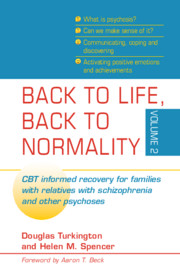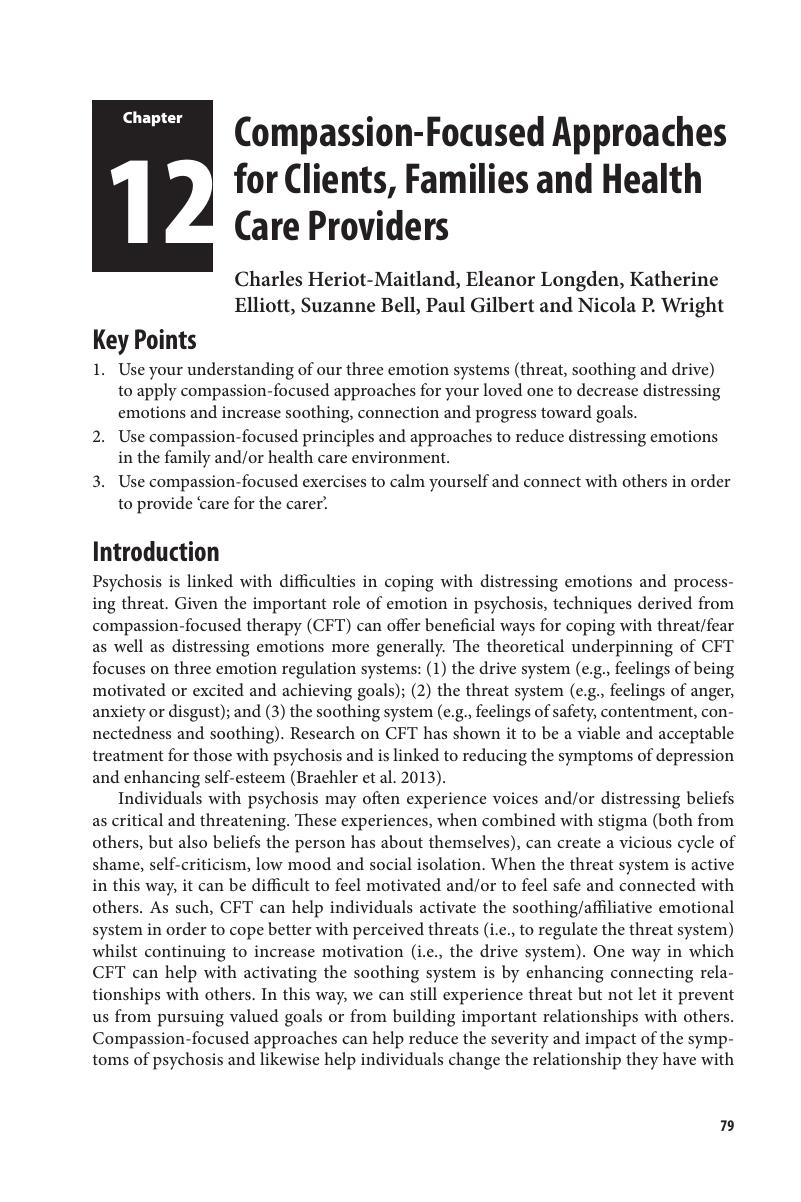 Back to Life, Back to Normality
Back to Life, Back to Normality Book contents
- Back to Life, Back to Normality Volume 2
- Back to Life, Back to Normality Volume 2
- Copyright page
- Contents
- Endorsements
- Testimonials
- Contributors
- Foreword
- Preface
- Chapter 1 What Is Psychosis? What Is Schizophrenia?
- Chapter 2 Psychosis Usually Has a Natural Tendency towards Recovery
- Chapter 3 Positive Aspects of Psychosis
- Chapter 4 When Can Psychosis Escalate and Will Medicines Help?
- Chapter 5 Making Sense of Psychosis
- Chapter 6 What If the Psychosis Is Linked to Trauma?
- Chapter 7 The Five Pillars of Caring for Psychosis
- Chapter 8 Effective Coping
- Chapter 9 Caring about Delusions and Unusual Beliefs
- Chapter 10 My Story of Psychosis and CBT
- Chapter 11 Dealing with Visions
- Chapter 12 Compassion-Focused Approaches for Clients, Families and Health Care Providers
- Chapter 13 Improving Self-Care, Attention/Memory, Motivation and Social Functioning
- Chapter 14 Where Can We Learn More?
- Index
- References
Chapter 12 - Compassion-Focused Approaches for Clients, Families and Health Care Providers
Published online by Cambridge University Press: 16 November 2018
- Back to Life, Back to Normality Volume 2
- Back to Life, Back to Normality Volume 2
- Copyright page
- Contents
- Endorsements
- Testimonials
- Contributors
- Foreword
- Preface
- Chapter 1 What Is Psychosis? What Is Schizophrenia?
- Chapter 2 Psychosis Usually Has a Natural Tendency towards Recovery
- Chapter 3 Positive Aspects of Psychosis
- Chapter 4 When Can Psychosis Escalate and Will Medicines Help?
- Chapter 5 Making Sense of Psychosis
- Chapter 6 What If the Psychosis Is Linked to Trauma?
- Chapter 7 The Five Pillars of Caring for Psychosis
- Chapter 8 Effective Coping
- Chapter 9 Caring about Delusions and Unusual Beliefs
- Chapter 10 My Story of Psychosis and CBT
- Chapter 11 Dealing with Visions
- Chapter 12 Compassion-Focused Approaches for Clients, Families and Health Care Providers
- Chapter 13 Improving Self-Care, Attention/Memory, Motivation and Social Functioning
- Chapter 14 Where Can We Learn More?
- Index
- References
Summary

- Type
- Chapter
- Information
- Back to Life, Back to NormalityCBT Informed Recovery for Families with Relatives with Schizophrenia and Other Psychoses, pp. 79 - 88Publisher: Cambridge University PressPrint publication year: 2018
References
Reference
Additional Reading
Websites and Other Info
www.cultureofempathy.com/References/Experts/Paul-Gilbert.htm
www.amazon.com/Learning-Voices-Head-Books-Book-ebook/dp/B00ECJNSS6
TED Talk by Dr Eleanor Longden: The Voices in My Head
Links to Other Chapters
Compassion-focused approaches are woven through the chapters in the book. They can be used to reduce distress associated with stigma and trauma, including the experience of distressing beliefs, voices and visions. Compassion-focused approaches can be used to notice and address worry, rumination and avoidance. Compassion-focused approaches can be used to deal with stress and reduce triggers, catastrophic appraisals and social isolation. Compassion can influence our thinking, belief development and beliefs about the future. Through connection/affiliation and soothing, social defeat and negative symptoms can be reduced. This can then enhance drive/motivation and the ability to engage in meaningful goals. Finally, compassion-focused approaches can be used to have a powerful positive effect on the individual experiencing psychosis, their family and carers, the health care system and ultimately society.


